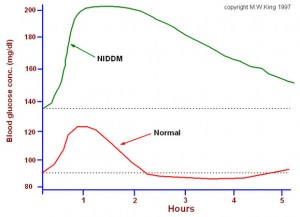The dangers of low blood glucose levels

What is the danger of a low blood glucose level? A Low blood glucose level is extremely dangerous. It can cause confusion, dizziness, altered mental status, and even fainting, all of which can lead to serious harm to the person.
Hypoglycemia (as it is called) is the opposite of Diabetes. With diabetes the low blood glucose range is about the same as a normal person average glucose levels, meaning the glucose levels are extremely high (and this is dangerous in the long run). However with hypoglycemia the low blood glucose level is extremely low. This is caused by either lack of food or too much insulin in the body. This can be reversed if food is taken such as simple sugars to boost the body and complex carbohydrates following quickly afterwards.
The average low blood glucose level is 60.8 mg/dl and the high blood glucose level being 104.4 mg/dl. The amounts for a person suffering from hypoglycemia can be as low as 50 mg/dl. At these levels the brain does not get the amount of glucose needed, and this can result in serious damages. At first the person will suffer dizziness and confusion, but as it progresses shaking, altered mental status, and fainting will occur al are very dangerous.
There is several ways to treat a low blood glucose level. The first is going to your doctor (which is always best, especially if you suffer with this often). The second (which your doctor may prescribe) is using a blood glucose meter. A blood glucose meter is a small hand held item that is used to measure the amount of glucose in the blood. The unit uses small plastic strips to measure the amount s in the blood and display the results on the side in seconds. So using this unit is the best way to treat a low blood glucose level.




